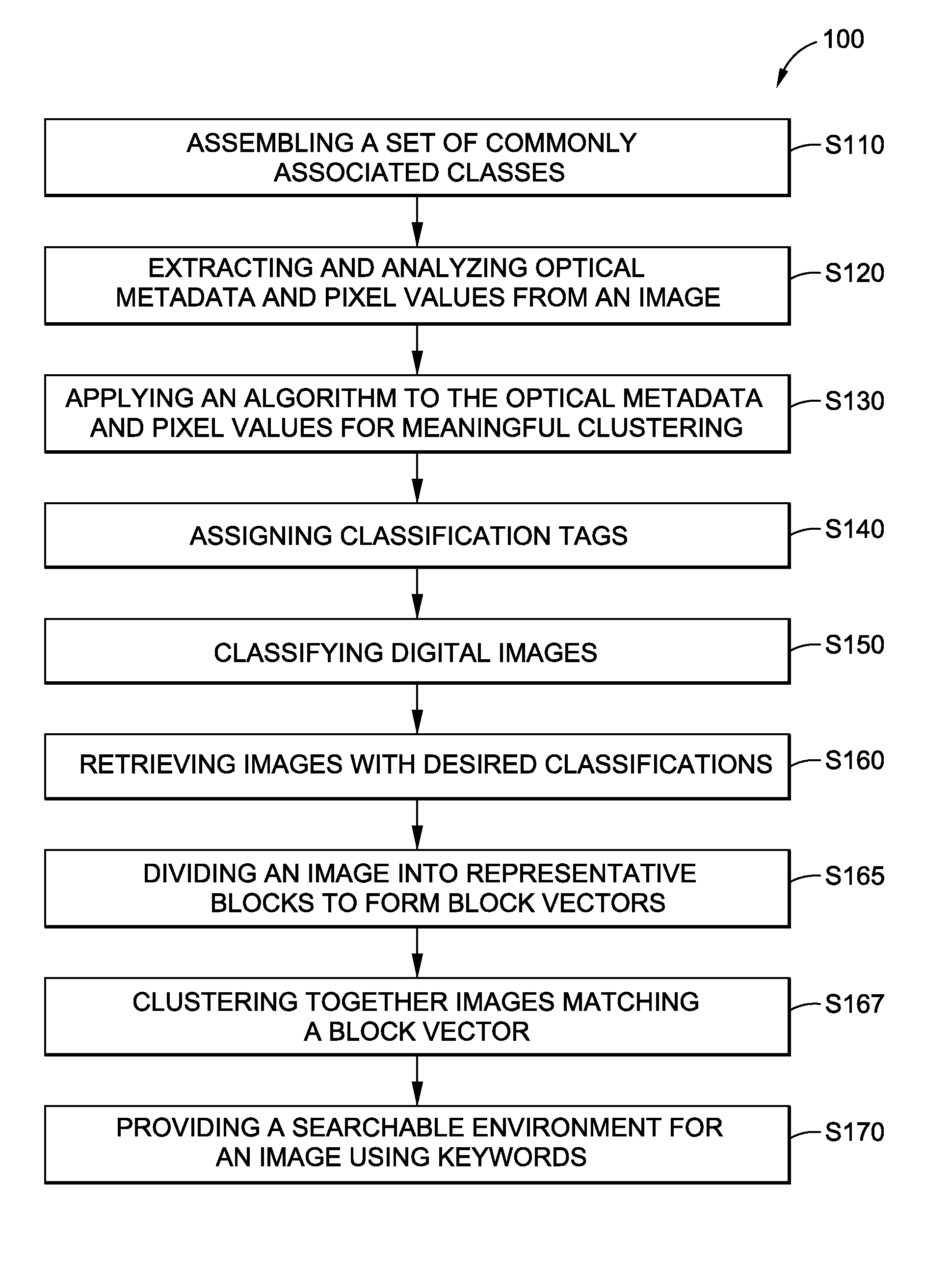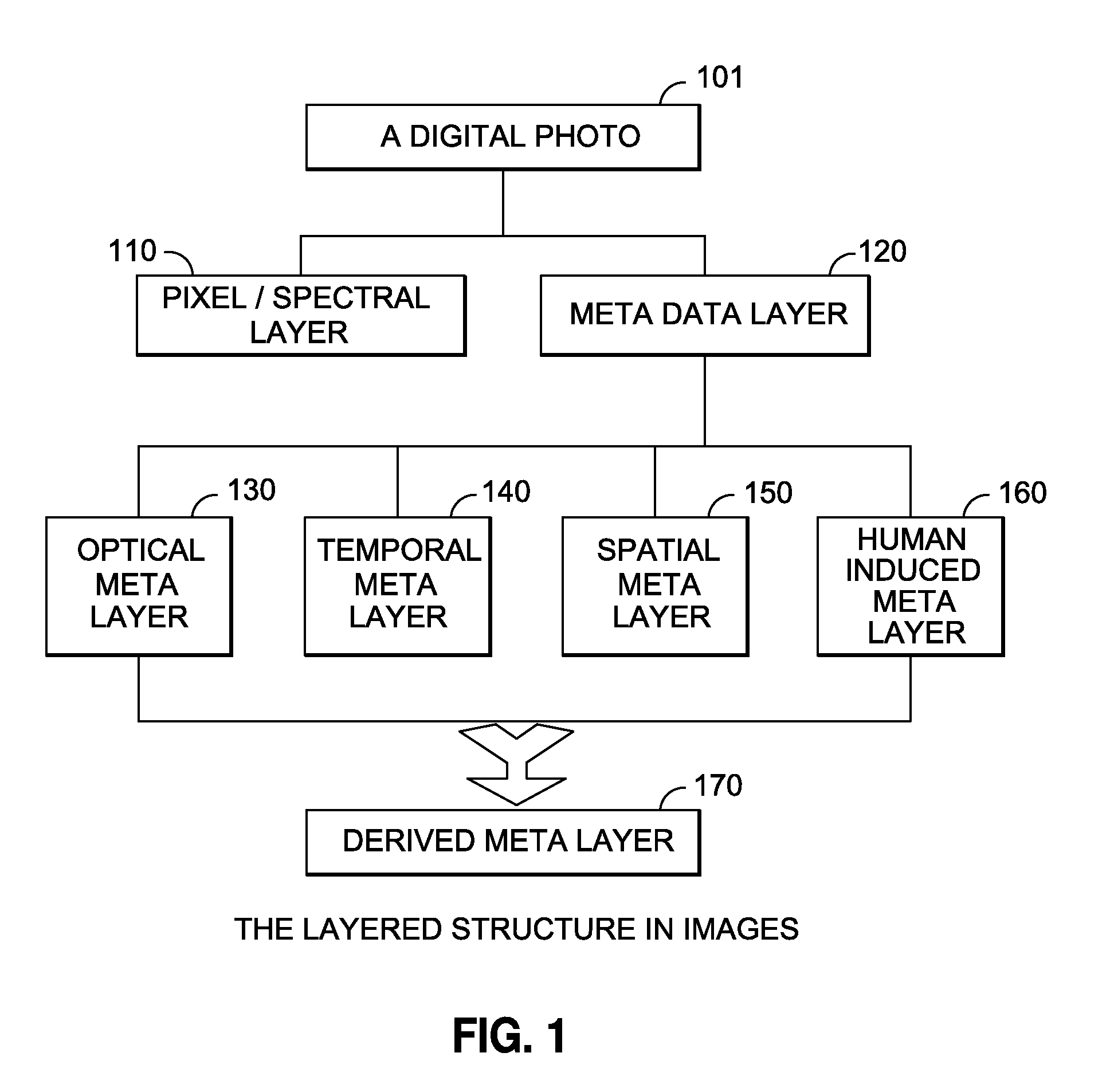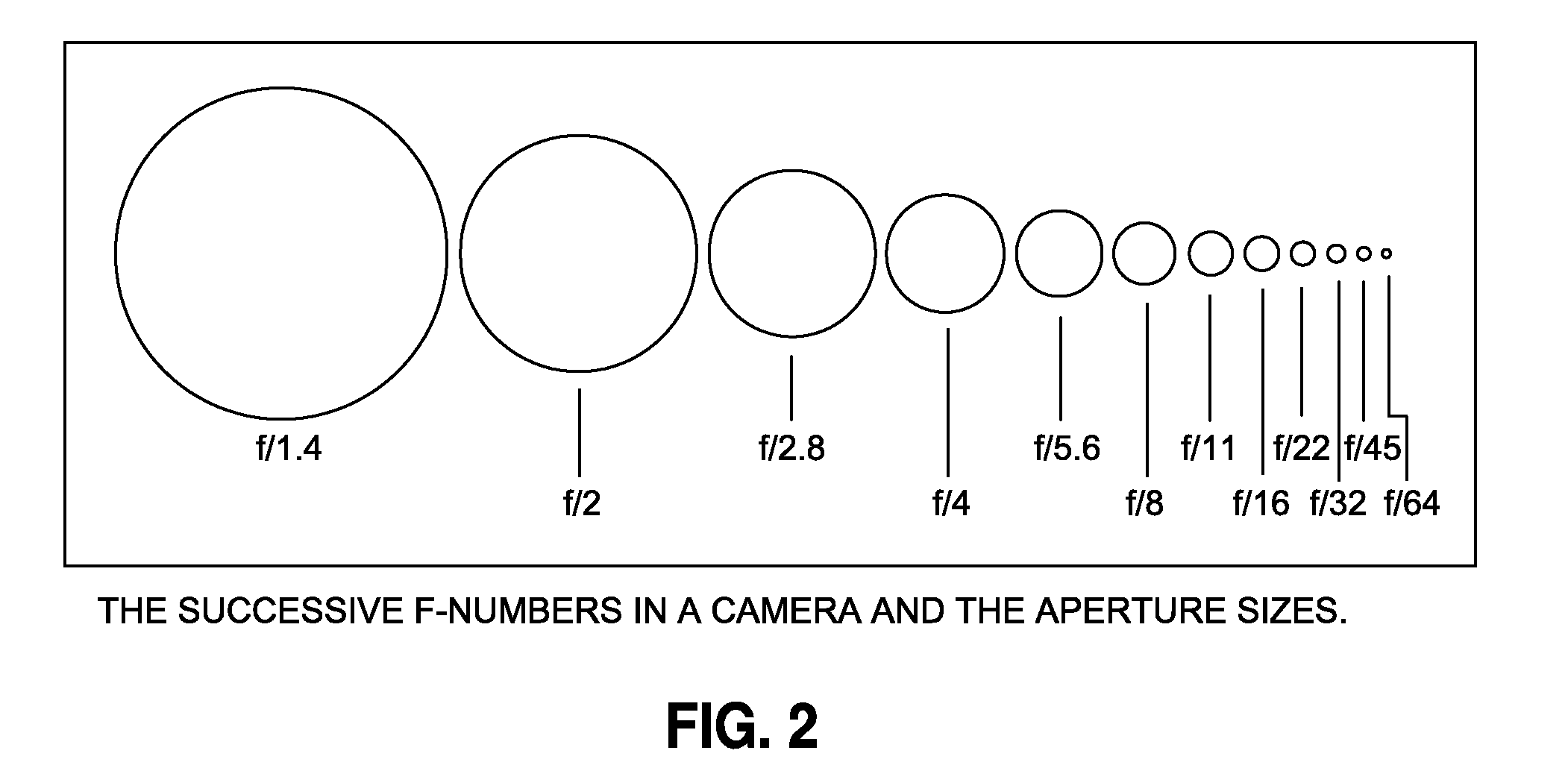Photo classification using optical parameters of camera from EXIF metadata
a technology of exif metadata and metadata, applied in the field of digital files, can solve the problems of inability to use any strong reference to vision physics, difficulty in image search using an example or low level feature,
- Summary
- Abstract
- Description
- Claims
- Application Information
AI Technical Summary
Benefits of technology
Problems solved by technology
Method used
Image
Examples
Embodiment Construction
[0031]The following detailed description is of the best currently contemplated modes of carrying out the invention. The description is not to be taken in a limiting sense, but is made merely for the purpose of illustrating the general principles of the invention, since the scope of the invention is best defined by the appended claims.
[0032]The traditional camera records information (coming through the incident light) on films using chemical symbols. The digital camera has CCD / CMOS image sensors which capture visual signals and store them in the electromagnetic memory. But apart from visual signal, the digital camera stores other context information too. Hence, referring to FIG. 1, an exemplary multilayered structure of a digital photograph 101 may be proposed. The layers are i. Pixel / Spectral layer 110 and ii. Meta Layer 120. The pixel layer 110 may contain the information recorded by the CCD as pixel values. The Meta Data Layer may have the following sub layers: a. Optical Meta Lay...
PUM
 Login to View More
Login to View More Abstract
Description
Claims
Application Information
 Login to View More
Login to View More - R&D
- Intellectual Property
- Life Sciences
- Materials
- Tech Scout
- Unparalleled Data Quality
- Higher Quality Content
- 60% Fewer Hallucinations
Browse by: Latest US Patents, China's latest patents, Technical Efficacy Thesaurus, Application Domain, Technology Topic, Popular Technical Reports.
© 2025 PatSnap. All rights reserved.Legal|Privacy policy|Modern Slavery Act Transparency Statement|Sitemap|About US| Contact US: help@patsnap.com



